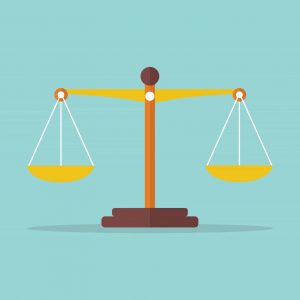 While the person you work for can always be referred to as your employer, do you know what your relationship to them is? Are you an employee? Or an independent contractor? You had best be certain, otherwise you may face some surprises at tax time if the Canada Revenue Agency (CRA) takes a different view.
While the person you work for can always be referred to as your employer, do you know what your relationship to them is? Are you an employee? Or an independent contractor? You had best be certain, otherwise you may face some surprises at tax time if the Canada Revenue Agency (CRA) takes a different view.
BENEFITS OF INDEPENDENT CONTRACTORS
There are benefits to be had for both independent contractors and those that employ them. Employers enjoy an easier hiring process, and often a less expensive worker. This is because the independent contractor is responsible for their own CPP contributions and taxes, and the employer also saves by not having to do payroll, provide benefit packages, or make payments on the worker’s behalf.
The contractors also have certain benefits, a significant one being the ability to deduct any reasonable business expenses. It is important, however, to verify that you are indeed considered a contractor. If the CRA should happen to disagree, both you and your employer will find yourselves responsible for unpaid taxes, CPP and EI premiums, in addition to interest and penalties. As a contractor, your reasonable business expenses may be ineligible too.
The definition of the relationship between a contractor and employer falls into something of a grey area which may change on occasion. It is therefore important for you to protect your contractor status, but how?
The CRA uses a 4-point list as a means to determine the type of relationship you have with your employer. More information can also be found in CRA’s Employee or Self Employed Guide which will “in most cases, allow payers and workers to determine the nature of their relationship”.
4 POINTS TO DETERMINE YOUR STATUS
Control
Control is the main point to be considered. Who determines the specifics of work to be done, such as time, place and manner of working? Who determines the salary to be paid? If it is the employer, then this is an employer-employee relationship. In this relationship, the employer also maintains the right to hire and fire workers. They can be considered to be in control even if they do directly control the worker’s activities.
On the other hand, if the worker determines for himself how, when and where work is to be done, then this is considered a business relationship, though the contractor should take care to ensure that they can demonstrate that they are the one planning the work.
Ownership of Tools
Typically, a contractor is responsible for providing their own tools. There are, however, certain professions that require an employee to do the same, such as a car mechanic. As a result, the CRA instead considers the cost of using the tools as a more reliable indicator.
According to the CRA, “When workers purchase or rent equipment or large tools that require a major investment and costly maintenance, it usually indicates that they are self-employed individuals, because they may incur losses when replacing or repairing their equipment”.
This applies to equipment such as laptops and mobile devices for those who work online from home.
Chance of Profit and Risk of Loss
This can easily be measured based on your level of financial involvement with a business. The differentiation is fairly simple and relies on three points:
- Do you cover your costs of operations?
- Is there an opportunity for you to make a profit?
- Do you risk financial loss due to factors such as damage to equipment, delays or bad debts?
If these three factors are applicable to your situation, you are a contractor and not an employee.
Integration
According to the CRA, “Where the worker integrates the payer’s activities to his own commercial activities, a business relationship probably exists. Where the worker integrates his activities to the commercial activities of the payer, an employer-employee relationship probably exists”.
The exact manner in which integration can be measured is unfortunately not fully clarified. The CRA primarily uses this as a means of reviewing and summarizing the previous three. You should be sure to protect yourself through your contract with the employer, keeping the first three points of the guidelines above in mind. In the event of a change (real or perceived) in the relationship between you and the employer, or if the employer argues that the relationship is not actually what it was originally represented to be, then having a carefully-written contract may provide you some protection.
DOES INCORPORATION MAKE YOU A CONTRACTOR?
Incorporation is not proof of a business relationship itself, though it helps to imply a certain distance between you and the employer. However, if you are working exclusively for one employer and performing duties that might normally be reserved for an employee, you run the risk of being considered a Personal Service Corporation, losing the right to business deductions.
It is important for you to take the necessary steps to protect your status as an independent contractor and to make sure that this status is clearly defined. Having the CRA declare you an employee could have major ramifications for your income taxes.
If you are still uncertain about your status and whether you are considered an independent contractor or an employee, discuss with your Accountant or give us a call.
***This blog is for information only and not to be used as tax advice or planning without first seeking professional advice. Information is subject to change without notice.
